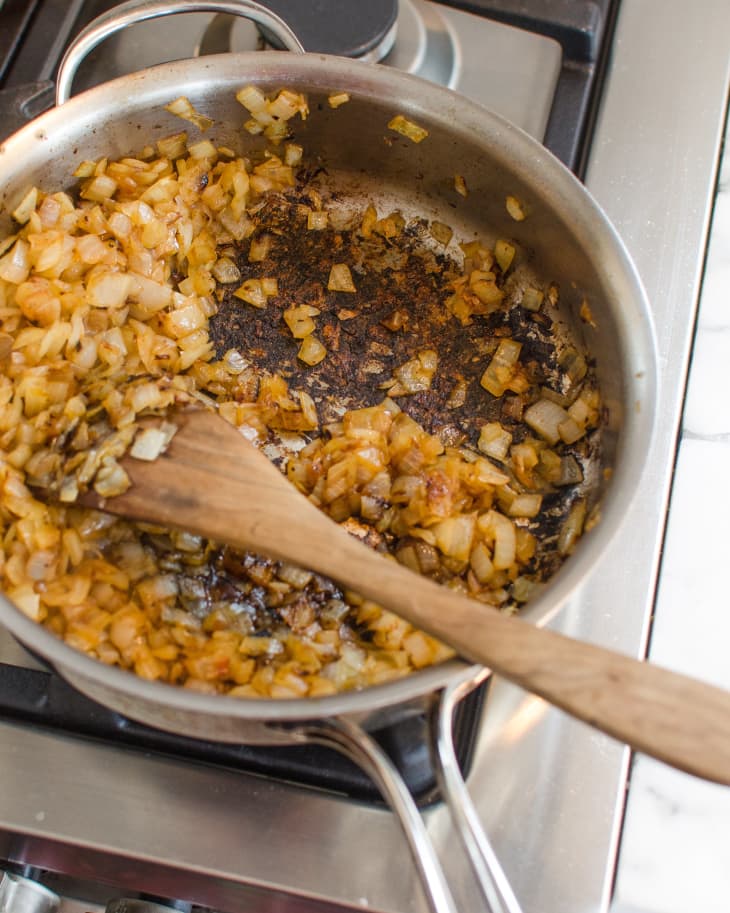Why You Shouldn’t Take a Pan Off the Stove Until It’s Clean
We all have those moments in the kitchen, where we look down at a pan and realize that in the process of cooking we’ve created a deep, black crust on the bottom. Visions of steel wool and days of soaking flicker across our minds. But no. You shouldn’t take that pan off the stove until it’s already clean. What, you say. Faith, you make no sense. How can you clean a pan while it’s still on the stove?
Let me show you what I mean. It’s easy, and a matter of courtesy, really: don’t pass on your cooking mess to the dish washer of the household (especially if that dish washer is you).
Here’s how I clean a tough pan, all while it’s still on the stove. The method I’m going to show you here is for when you’re cooking something (like caramelized onions, or chunks of meat) where you want that black crust mixed back into the food. It may look burnt and unappetizing but it’s actually full of the smoky, interesting flavors that make a dish better.
Step 1: Turn the heat up to high.
When you’re getting near the end of your cooking or searing process, as I was here with the caramelized onions, turn the heat up to high, if it isn’t already.
Step 2: Pour in some water and scrape.
Pour in about 1/4 cup of water. It should immediately steam up. This is your golden moment (they don’t call it steam power for nothing). As the water steams in the pan, use your spatula to aggressively scrape. You should find that any spot of crust that the water and steam touch is easily scraped up.
The water will evaporate and it won’t make your dish soggy, so don’t worry about that. In fact, this process of adding a little water and letting it evaporate over high heat helps to concentrate flavors, as well as clean the pan.
After a minute or two of scraping your pan should look something like this:
Step 3: Repeat.
If you didn’t get as much of the crust up as you would like, pour in a little more water. Sometimes I dribble some water around the edges of the pan and try to scrape the sides clean.
Then remove your food from the pan and you should see something like this:
What if I don’t want all that black stuff in my food?
That’s totally fine. In that case, take your food out of the pan first, then put the pan back over high heat, add water, and scrape. It’s a heck of a lot easier than cleaning it later with steel wool in the sink.
This is actually deglazing, as you might already know.
This process actually has a fancy name, deglazing, and the technique is essential to many sauces. Chefs often deglaze even when they don’t have a burnt crust on the pan, but instead there are little bits of meat and juices and cooking detritus left behind after searing or browning. There is so much flavor in these little bits; you don’t want to leave them behind. So this process is used to lift them up and flavor the gravy or sauce.
But it’s also a very useful method for getting your pans clean before you even take them off the stove.
→ Read Emma’s perspective on deglazing: Cooking Basics: When and How To Deglaze a Pan
Do you do this too? This is just a part of my normal cooking routine now. It’s another little habit that makes up cleaning as I go in the kitchen.
